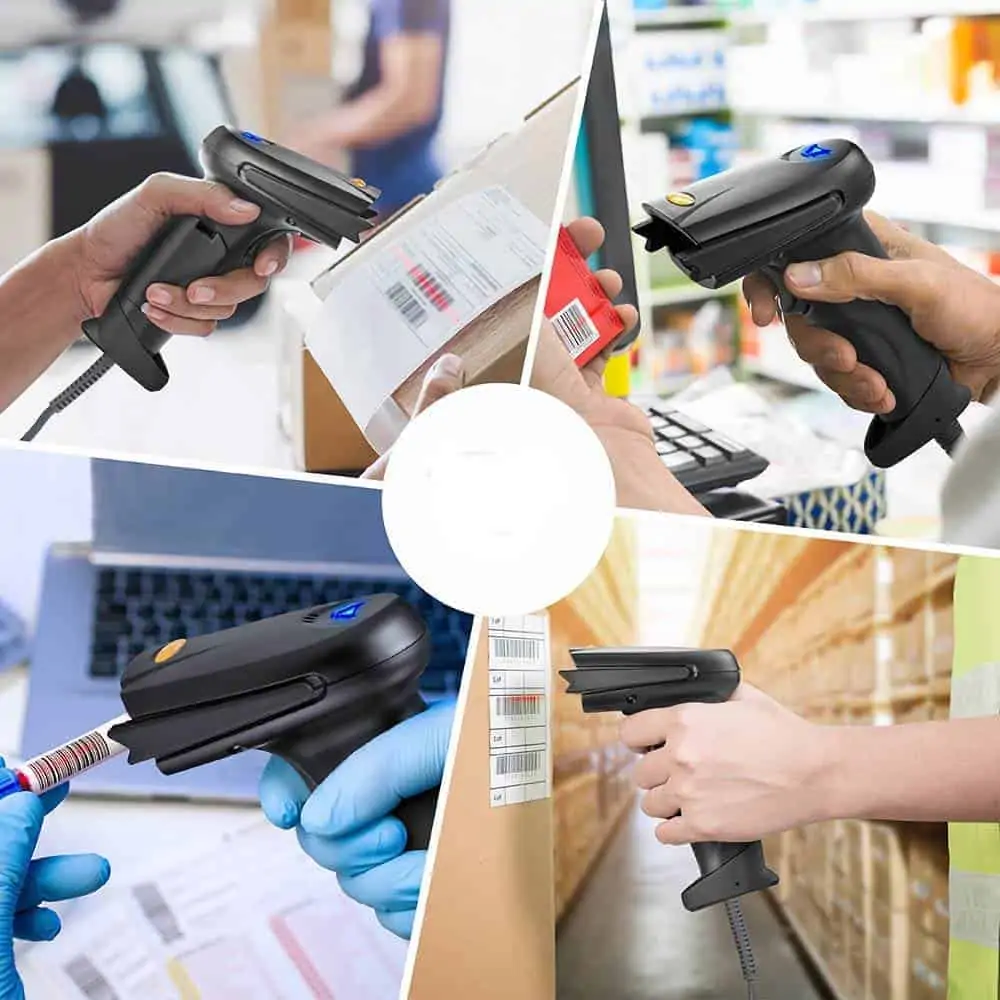Inventory scanner system for small business – Inventory scanner systems for small businesses are transforming the way businesses manage their inventory, bringing a wealth of benefits that streamline operations and boost efficiency. These systems empower small businesses to overcome inventory management challenges, ensuring accuracy, minimizing errors, and reducing labor costs.
As we delve into this comprehensive guide, we will explore the different types of inventory scanner systems available, their advantages and disadvantages, and key considerations for choosing the right system for your business. We will also provide a step-by-step implementation guide and discuss best practices to maximize effectiveness. Finally, we will showcase case studies and success stories to demonstrate the tangible benefits of implementing inventory scanner systems in small businesses.
Benefits of Using an Inventory Scanner System

Inventory scanner systems offer numerous advantages for small businesses, including:
Improved Accuracy and Efficiency:
Manual inventory tracking is prone to human error, leading to inaccuracies and discrepancies. Inventory scanner systems automate the process, eliminating manual data entry and reducing the risk of errors. This improves the accuracy of inventory records, ensuring that businesses have a clear understanding of their stock levels.
Reduced Labor Costs:
Manual inventory tracking requires significant labor hours, especially for businesses with large or complex inventories. Inventory scanner systems reduce the time spent on inventory management tasks, freeing up employees for other productive activities. This can lead to substantial labor cost savings.
Minimized Errors:
Inventory scanner systems use barcode or RFID technology to identify and track inventory items. This eliminates the possibility of human error in identifying and counting items, minimizing the risk of stockouts, overstocking, and other inventory-related issues.
Considerations for Choosing an Inventory Scanner System
When selecting an inventory scanner system, several factors must be taken into account to ensure optimal functionality and alignment with business needs. These considerations include:
Business Size and Inventory Volume: The size of the business and the volume of inventory it manages directly influence the type of scanner system required. Smaller businesses with limited inventory may opt for basic handheld scanners, while larger businesses with extensive inventory will need more advanced systems with features such as RFID or barcode scanning.
Budget and Return on Investment, Inventory scanner system for small business
The cost of the inventory scanner system should align with the business’s budget and the expected return on investment (ROI). Businesses should evaluate the potential cost savings and efficiency gains associated with the system to determine if the investment is financially viable.
Compatibility with Existing Systems
The inventory scanner system should be compatible with existing business systems, such as inventory management software and point-of-sale (POS) systems. Integration with these systems ensures seamless data transfer and eliminates manual data entry, reducing errors and improving efficiency.
Implementation and Best Practices: Inventory Scanner System For Small Business

Implementing an inventory scanner system requires a structured approach to ensure accuracy and efficiency. Follow these steps:
– Plan and Prepare: Determine the inventory items to be tracked, establish clear inventory procedures, and train staff on the system’s use.
– System Installation: Install the hardware and software components according to the manufacturer’s instructions.
– Data Entry: Enter all inventory items into the system, including their descriptions, quantities, and locations.
– Training and Adoption: Provide comprehensive training to staff on proper scanning techniques and inventory management practices.
– Continuous Monitoring: Regularly review inventory levels and make adjustments as needed to maintain accuracy.
Best Practices
To maximize the effectiveness of your inventory scanner system, follow these best practices:
– Train Staff Thoroughly: Ensure staff is proficient in using the scanner and adhering to inventory procedures.
– Establish Clear Inventory Procedures: Define clear guidelines for inventory counting, replenishment, and record-keeping.
– Maintain Accurate Data: Regularly verify inventory levels and update records to ensure accuracy.
– Utilize Reporting Features: Use the system’s reporting capabilities to generate reports on inventory levels, trends, and discrepancies.
– Integrate with Other Systems: Consider integrating the inventory scanner system with other business systems, such as accounting or customer relationship management, for seamless data exchange.
Case Studies and Success Stories
Numerous small businesses have reaped the benefits of implementing inventory scanner systems. These case studies showcase the tangible improvements achieved, highlighting the efficiency gains and cost reductions.
Local Hardware Store
A local hardware store experienced significant inventory discrepancies and wasted time searching for misplaced items. After implementing an inventory scanner system, they reduced inventory shrinkage by 20% and improved order fulfillment accuracy by 15%.
Future Trends in Inventory Management

The future of inventory management is rapidly evolving, driven by technological advancements and changing business needs. Inventory scanner systems will continue to play a pivotal role in this transformation, integrating seamlessly with other technologies to streamline operations and enhance efficiency.
Integration with AI and Machine Learning
Artificial intelligence (AI) and machine learning (ML) are transforming inventory management by automating tasks, predicting demand, and optimizing stock levels. Inventory scanner systems will leverage AI/ML algorithms to provide real-time insights into inventory data, enabling businesses to make informed decisions and respond quickly to market fluctuations.
Blockchain Technology
Blockchain technology is gaining traction in supply chain management, including inventory management. Inventory scanner systems will incorporate blockchain to create a secure and transparent record of inventory transactions. This will enhance traceability, prevent fraud, and streamline collaboration among stakeholders.
RFID and IoT
Radio Frequency Identification (RFID) and the Internet of Things (IoT) are enabling real-time tracking of inventory items. Inventory scanner systems will integrate with RFID tags and IoT devices to provide continuous visibility into inventory levels, location, and movement. This will facilitate automated inventory updates, reduce manual errors, and improve overall operational efficiency.
Cloud-Based Inventory Management
Cloud-based inventory management systems are becoming increasingly popular due to their scalability, flexibility, and cost-effectiveness. Inventory scanner systems will integrate with cloud platforms to provide real-time access to inventory data from anywhere, anytime.
Predictive Analytics
Predictive analytics is another emerging trend in inventory management. Inventory scanner systems will utilize historical data and AI/ML algorithms to forecast demand, optimize stock levels, and minimize inventory costs. This will help businesses avoid stockouts, reduce waste, and improve customer satisfaction.
Ultimate Conclusion
Inventory scanner systems are revolutionizing inventory management for small businesses, empowering them to operate with greater efficiency, accuracy, and cost-effectiveness. By embracing these systems, small businesses can gain a competitive edge, streamline their operations, and unlock new opportunities for growth.
General Inquiries
What are the key benefits of using an inventory scanner system?
Inventory scanner systems offer numerous benefits, including improved accuracy, reduced labor costs, minimized errors, and enhanced efficiency in inventory management.
How do I choose the right inventory scanner system for my small business?
Consider factors such as business size, inventory volume, budget, return on investment, and compatibility with existing systems when selecting an inventory scanner system.
What are the best practices for implementing an inventory scanner system?
Proper staff training, clear inventory procedures, regular system maintenance, and ongoing evaluation are crucial for maximizing the effectiveness of an inventory scanner system.